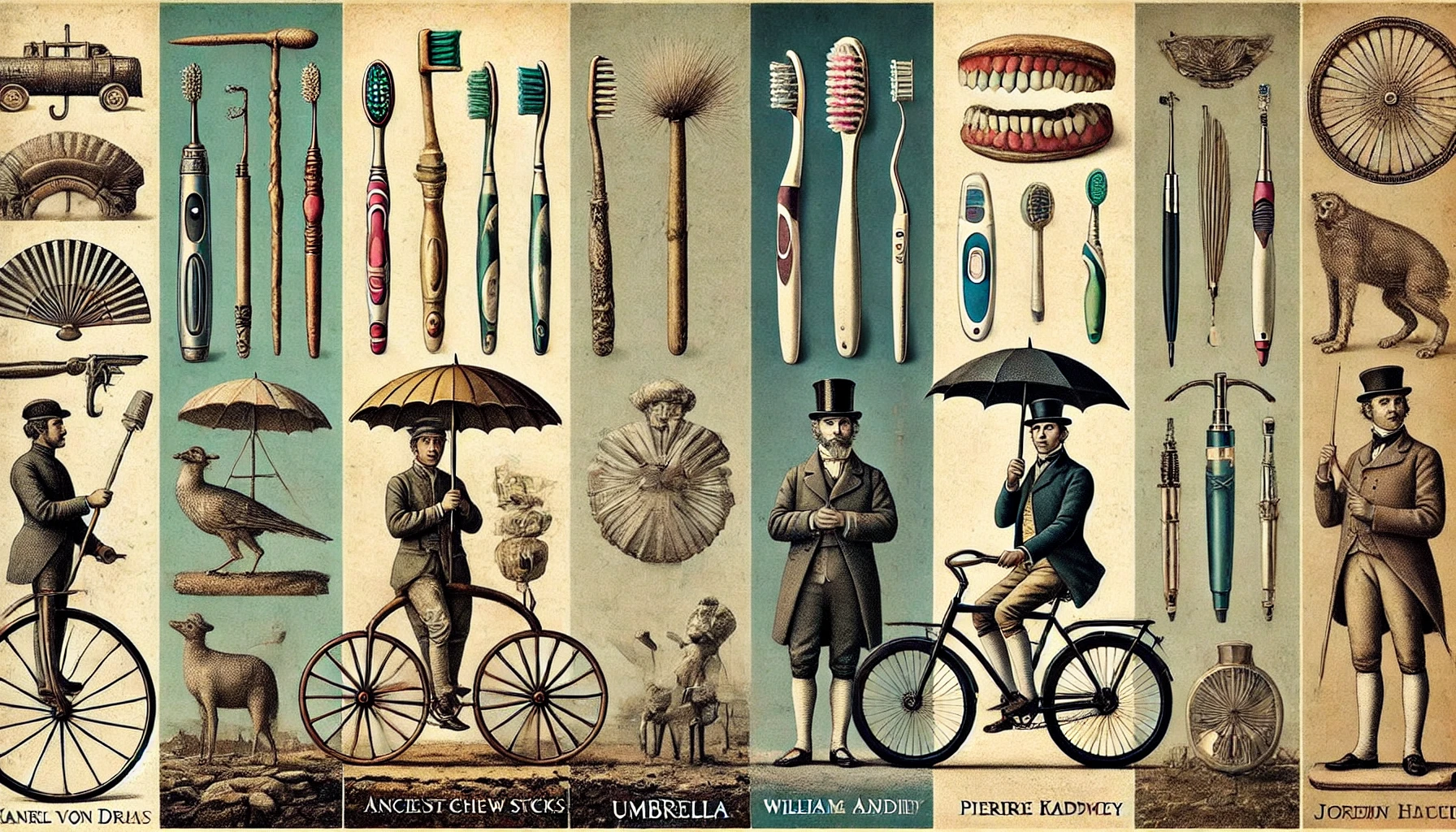
We often take for granted the everyday objects that make our lives easier and more convenient. However, each item has a fascinating history and a story of innovation and ingenuity. In this blog, we’ll explore the origins and history of three common items: the toothbrush, the umbrella, and the bicycle.
The Toothbrush: A Tool for Oral Hygiene Through the Ages
The toothbrush, a staple in our daily routines, has a history that dates back thousands of years. The earliest known toothbrushes were chew sticks, used by the ancient Babylonians and Egyptians around 3500 to 3000 BC. These sticks were made from twigs with frayed ends that helped clean teeth.
Fast forward to the 7th century, and the Chinese use hog bristles attached to bamboo or bone handles. This method of brushing teeth spread to Europe in the 17th century, where it evolved further. William Addis, an Englishman, is often credited with creating the first mass-produced toothbrush in 1780. While in prison, Addis crafted a toothbrush from a bone and bristles, leading to the birth of the modern toothbrush industry.
Significant advancements occurred in the 20th century, including Dupont’s introduction of nylon bristles in 1938. This innovation made toothbrushes more durable and hygienic. Today, toothbrushes come in various forms, including electric versions, continuing to evolve and improve oral hygiene.
The Umbrella: A Shelter from Rain and Sun
The umbrella is another everyday object with a rich history. Its origins can be traced back over 4,000 years to ancient civilizations such as Egypt, Assyria, and China. Initially, umbrellas were used as a symbol of status and protection from the sun. These early umbrellas were made from materials like feathers and lotus leaves.
It wasn’t until the 17th century that umbrellas became popular in Europe as a tool for protection against rain. Jonas Hanway, an Englishman, is often credited with popularizing the umbrella in England during the mid-1700s. Despite initial resistance and ridicule, umbrellas eventually became common in Europe.
A significant innovation, the folding umbrella, was patented in 1928 by Hans Haupt in Germany. This design made umbrellas more portable and convenient, contributing to their widespread use. Today, umbrellas are available in various styles and materials, offering protection from both rain and sun.
The Bicycle: Revolutionizing Transportation
The bicycle, a beloved mode of transportation and recreation, has a history of innovation and evolution. The earliest precursor to the bike was the “running machine” or “dandy horse,” invented by Karl von Drais in 1817. This two-wheeled vehicle had no pedals and was propelled by the rider’s feet pushing against the ground.
Pierre Michaux and Pierre Lallement in France invented the pedal-driven bicycle in the 1860s. This design featured pedals attached to the front wheel, marking a significant advancement in bicycle technology. John Kemp Starley’s subsequent invention of the chain drive in 1885 led to the development of the modern bicycle design, known as the “safety bicycle.”
Bicycles have continued to evolve, with innovations such as pneumatic tires, gears, and lightweight materials enhancing performance and comfort. Today, bicycles are used for commuting, exercise, and leisure worldwide, representing a sustainable and efficient mode of transportation.
Conclusion
The toothbrush, the umbrella, and the bicycle are just a few examples of everyday objects with rich and fascinating histories. Each of these items has undergone significant transformations over the centuries, driven by human ingenuity and the desire to improve our lives. The next time you brush your teeth, open an umbrella, or ride a bicycle, take a moment to appreciate the remarkable journey these objects have taken to become an integral part of our daily routines.

